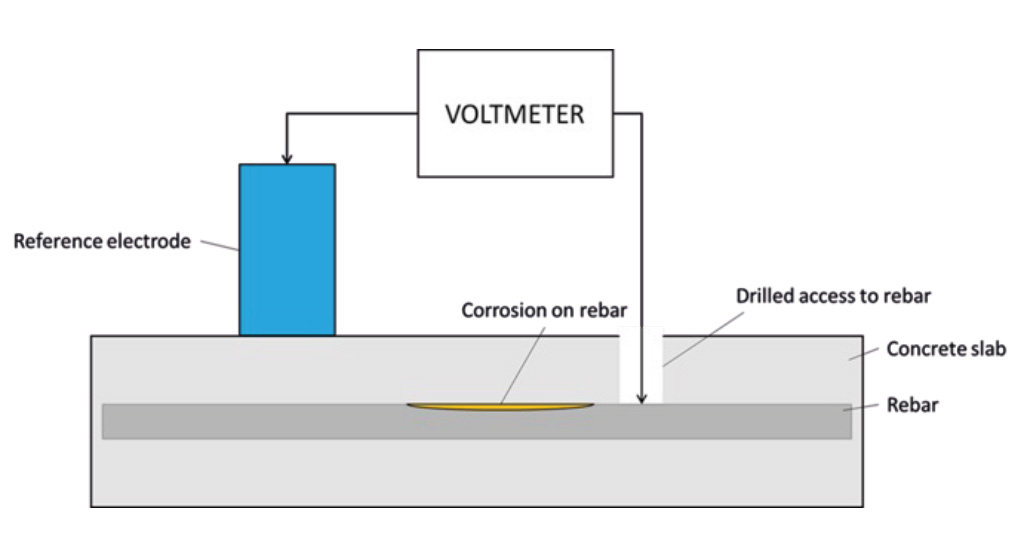HCPM
Half-Cell Potential Measurement
HCPM – Half-Cell Potential Measurement is a testing method, defined by ASTM C876-22b, to determine the extent of corrosion of concrete rebars. It works by measuring the electrical potential (voltage) produced when a reference electrode is placed in contact with the concrete face and is grounded to the rebar. This set-up forms a cell (ie a battery), where a higher voltage indicates the presence of corrosion within the vicinity of the path of electrical current.
As shown in the Figure below, HCPM requires direct access to points along the rebar, which means this is an invasive method via the use of drilling. The location of corrosion can be ascertained by comparing measurements along the rebar. The rate of corrosion can be determined by plotting measurements over time, typically with in-situ measurement systems left installed (ie a structural health monitoring set-up).

For more information on HCPM see:
- ASTM C876-22b, ‘Standard test method for corrosion potentials of uncoated reinforcing steel in concrete’. Available at: www.astm.org/c0876-22b.html
- L Sadowski, ‘Methodology for assessing the probability of corrosion in concrete structures on the basis of half-cell potential and concrete resistivity measurements’, The Scientific World Journal, No 3, Article 714501, 2013. Available at: https://rb.gy/hu4aom
WHAT THE HEC?! articles are not intended to be the definitive account on the topic or acronym in question. Readers’ comments and contributions are welcomed. Email: ndtnews@bindt.org